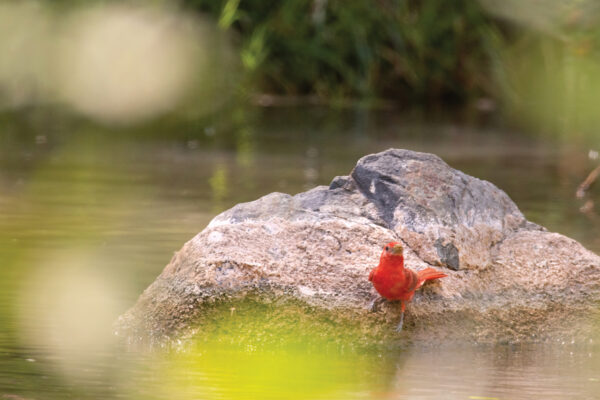Continued (page 4 of 5)
The family tells a story about traveling to Sedona to sell pieces made by Alice and Dee – David went along for the ride. “This man started following him around because he liked David’s belt buckle and wanted to buy it,” says Alice, laughing good-naturedly. “He bought it on the spot. Here Dee and I had done all the work and David sold a piece – it wasn’t fair!”
Passing On the Tradition
Even knowing how hard it is to make it as a silversmith, the Listers feel very strongly about passing the tradition to the next generation. Alice and David have five grandchildren, one who’s already learning the trade in high school, and Alice loves to make pieces for her two granddaughters. She proudly shows a cuff bracelet with a huge piece of green turquoise set in the center, the shank the perfect size for a tiny wrist. At the bottom of the stone the brown matrix appears to form a heart. Alice says as soon as she saw the stone, she knew it would be jewelry for Clarissa’s daughter, Alicia. She was also working on two delicate pettipoint squash blossom necklaces for the girls.
Vernon and Clarissa’s two oldest daughters are enrolled in Navajo Immersion School in Fort Defiance where they are learning their native language; they delight their grandmother by conversing with her in Navajo. Vernon says it’s very important to teach the kids silversmithing but Clarissa says it’s hard to teach kids in general about traditional crafts. “They don’t want to learn,” she says. “People ask me, How did your parents get you into it? I tell them, They had their ways.”
The Listers all wear other artists’ jewelry, but all except Alice are shy about wearing their own work. Dee and Clarissa say they will wear each other’s jewelry as well as their parents’ designs. Alice pulls out an unusual turquoise ring David made for her when they first began silversmithing and says that if she finds a stone she loves, she will use it for a piece of jewelry for herself.
“But you know what happens?” she says. “You wear it for a while and someone sees it and wants to buy it from you. Then it’s gone.”
Native American Jewelry: How to Spot a Fake
For those who live in the Southwest, Native American jewelry is as much a wardrobe staple as jeans; visitors look high and low for a perfect piece to bring home to capture their experience. But when you buy a piece of Native American jewelry from a tourist shop, gallery, or even directly from a Native American artist, how can you be sure the piece is authentic? “In my experience, there is more fake Indian jewelry on the market than real right now,” says Pam Phillips, a founder of the Council for Indigenous Arts and Culture, a group consisting primarily of Native Americans that has been educating consumers on authentic Native crafts since 1998 (www.ciaccouncil.org). Phillips’ family has traded with Native Americans for hundreds of years; she owns a jewelry store in Indiana. “I’d say 60 to 80 percent of what you find is fake – it’s made overseas,” she asserts.
Meredith Stanton, director of the Indian Arts and Crafts Board, a branch of the U.S. Dept. of the Interior, says a formal study has not been conducted on how many fake Native crafts are sold but she says it’s a “major problem. We are extremely concerned, it’s our primary focus. We are here to educate consumers and field complaints, and we receive a good number on a weekly basis.”
The Indian Arts and Crafts Act of 1990, amended in 2000 to further define Native American- and Alaska Native-made goods, made it illegal to misrepresent an item as Indian-made. Any item marketed or labeled as Native American-crafted must be made by a member of a state or federally recognized tribe or by a certified Indian artisan (an individual certified by an Indian tribe as a nonmember artisan). Individual states also have laws regarding the sale of Indian arts.



